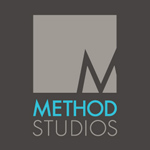Method Studios combined efforts of three of its locations—Los Angeles, Vancouver and London—to complete a total of 398 shots for, and was the main visual effects vender on, Warner Bros.’ Cloud Atlas. The film, directed by Lana Wachowski, Tom Tykwer and Andy Wachowski, explores how the actions of individuals impact the lives of others in the past, present and future. Dan Glass, Method’s chief creative officer, and Stephane Ceretti of the London studio were overall vfx supervisors for the production, overseeing 11 vendors in addition to the Method crews.
“We made the most of Method’s international network and shared shots across our three locations which were split up by key sequences,” says Ceretti. “Method Studios in London contributed concept design work for the movie’s art department as well as finished matte paintings for several environments including the ‘destroyed city’ scenes within the film. The Los Angeles and Vancouver locations created numerous environmental sequences, and their CG models and motion graphics assets were shared internally and also passed on to other vendors such as ILM and Scanline.”

The Method L.A. team was responsible for creating the fully CG establishing shots of the futuristic city Neo Seoul, along with dynamic flight and escape sequences. They also created CG vehicles and digital facial makeup re-touching work on Chang (played by Jim Sturgess, who is made to look Asian in the film). LA vfx supervisor for Method adds the team added to the creative direction in designing skiffs, gunships, ray gun blasts, the water-like energy field of the transway and the architecture of the city.

Geoffrey Hancock and Olivier Dumont supervised the vfx work at the Vancouver studio, which included creation of over 100 3D buildings for Neo Seoul. These elements were shared among the Method Studios network and appear in a number of scenes. Additionally, Method Design created the animated main title typography, along with a number of motion graphics elements used throughout the film including the heads-up displays for the vehicles and weaponry plus the touch-controlled Orison displays.

“This was a hugely intricate film and our Method crews created beautiful work while collaborating seamlessly together over three countries,” adds Glass. “The project was unique from the outset and while drawn to it creatively, the complexity of fitting the pieces of the story together went well beyond the narrative structure. It proved to be a worthy challenge for all involved and we couldn’t have pulled it off without the great talent of our own Method team and that of all our vendors across the globe.”




 Win a Funko X Lilo & Stitch Prize Pack!
Win a Funko X Lilo & Stitch Prize Pack!

